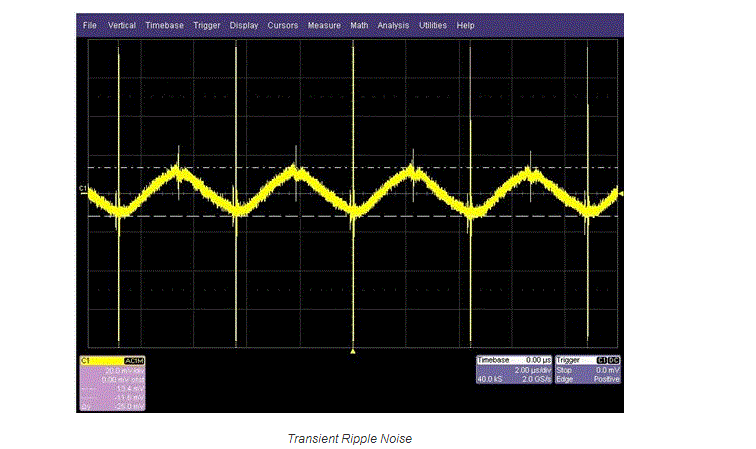Last week, I posted part 1 of a 3 part series on how to test your power supply design: Testing power supply: measuring efficiency. I covered the fundamentals about testing, including the necessary equipment and how to prepare a circuit for testing. I also covered how to accurately measure start-up time, current limit, and power supply efficiency.
Today, I'll touch on another important metric when it comes to testing power supply performance: measuring noise.
What causes power supply noise?
Power supply noise is generated from many different sources. Like any amplifier, power supplies generate many different types of noise, but a switch mode design also has to deal with the noise generated by the inherent switching noise which takes place. A switching power supply can be designed to minimize its switching noise and can include output filters to reduce the noise, but it's impossible to know exactly what levels of noise a power supply will produce until it's actually measured.

Why should one measure noise?
The bias voltages within any system are what I like to think of as the foundation of the electrical circuits. All of the system connects to these sources of power and must deal with its associated noise. If the noise generated (or passed) from the power supply is beyond what a circuit can tolerate, a system will naturally malfunction. The issue with noise is that it might be such that it doesn't cause catastrophic failure, at least not all the time. Noise sometimes causes intermittent errors which might not be evident during a thorough system test in a specific environment with a typical set of component values, but might later cause problems. In some cases, I see software patches written to “cover-up” occasional system errors which may be found to root themselves back to power supply noise. Is software the right way to fix a problem which could have been addressed within the power supply? I think not, but I best not digress into what might be a somewhat philosophical discussion, better I add that to the list of discussions for later, “Fixing Problems, Software vs Hardware”…
I occasionally see noisy power supply designs causing a system to fail EMI testing, slowing down a product release. These slowdowns may be avoided if proper testing was performed and noise issues dealt with earlier in the process. When it comes to biasing an analog circuit, power supply noise can result in a lower performance system, possibly reducing the products value to the end customer. Think about the power supply for an analog signal path from a sensor of some sort. In these systems noise directly impacts the sensitivity of the system, a higher noise floor results in lower sensitivity. When a designer takes the time to actually measure and analyze the noise generated by a power supply they can either accept the performance or almost always make modifications to avoid later system level problems, often at almost no extra cost. The cost to test and possibly modify a power supply is usually far less then later system level debug and modifications, or the unfortunate situation when a product is released with sub-par performance.
It’s this attention to detail that makes the difference between a marginally working product, and a highest performance, highest reliability product.
Walk through how to measure noise in your power supply with me in this Engineer It video.
More on Testing Power Supplies

Buy the ADS5295EVM Now at Mouser Electronics
Advertisement
Learn more about Texas Instruments






